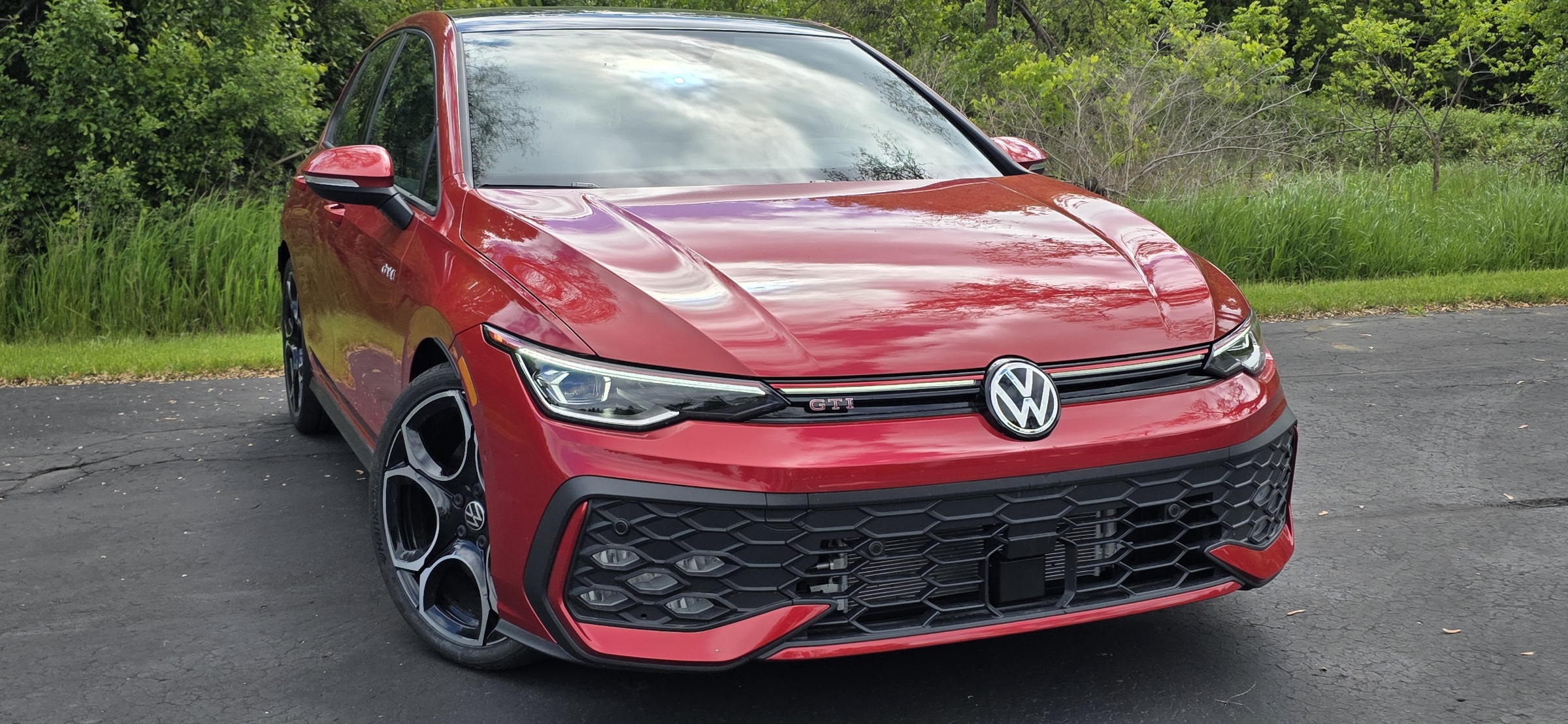When Volkswagen said that it was axing the manual transmission from the GTI, it felt like the end of an era. While the GTI has evolved over the past few decades, the manual transmission has always been a reliable partner for the model and stuck with it through the good times and the bad times. However, Volkswagen thinks that it has offered a decent trade-off for buyers in the form of better features and improved technology.
But is all of this enough to make the GTI a better performance vehicle option for buyers as it faces increased competition from compact CUVs and SUVs entering the performance markets that it once had largely to itself?
New makeup smooths out the GTI’s rough edges
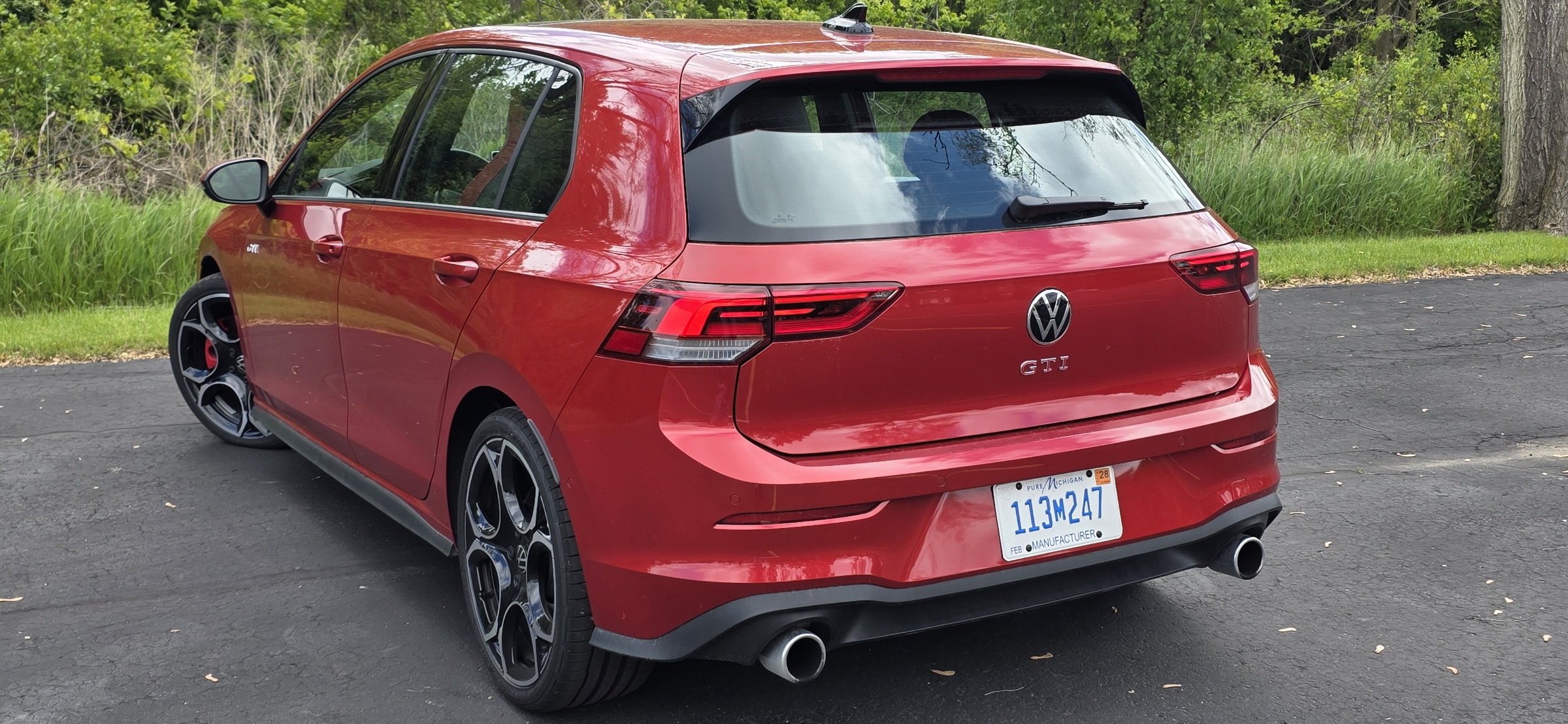
The updates Volkswagen made to the GTI for 2025 are part of a broader mid-cycle refresh with the five-pod headlights getting fang-like elements and a new lighted strip that now links the headlights together. The front VW badge lights up and the thin red strip on top of the running lights moves from fender to fender. Alpine Silver and Slate Blue join the color palette but our tester arrived adorned in slick red paint with the color expected to be a top seller for the model.
GTI badges are now found on the front fenders and our tester arrived with a set of 19-inch wheels that are supposed to mimic the hoops seen on the fifth-generation GTI. The rest of the styling and the core profile carry over largely unchanged and this is an attempt to maintain the high degree of familiarity that has often been a cornerstone of the GTI’s success. The refreshes here are light but they do just enough to help the GTI stay fresh in the face of growing competition.
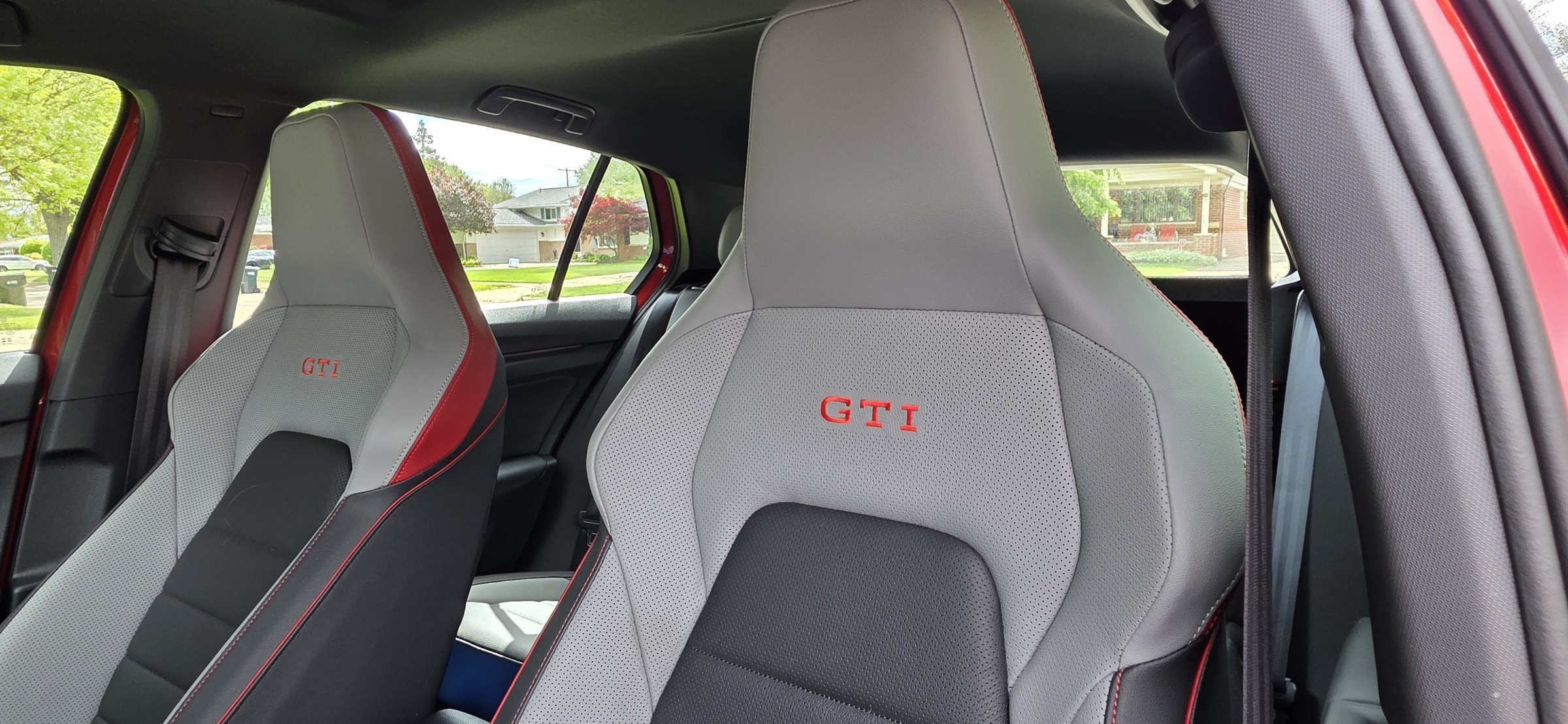
Meanwhile, the interior of our tester also showed off some of the changes that VW designers made in an attempt to improve usability. The steering wheel gets its buttons back as VW is following through on promises to end a controversial and unpopular experiment in touch-capacitive controls. The old controls were horrible and the return of analog controls should please jilted buyers. A new 12.9-inch infotainment system shared with models like the ID. Buzz provides a bigger screen and a smoother interface but we wish that Volkswagen would’ve added analog controls to the system since the finicky slider system is still frustrating to use. Autobahn models like our tester get leather seats but while the front seats are sufficiently bolstered and offer good amounts of head and legroom, the backseats are still a bit too tight for taller passengers. The rear seats themselves can be folded down to help improve cargo capacity when they are not being used to haul people.
Four-cylinder performance shines in GTI
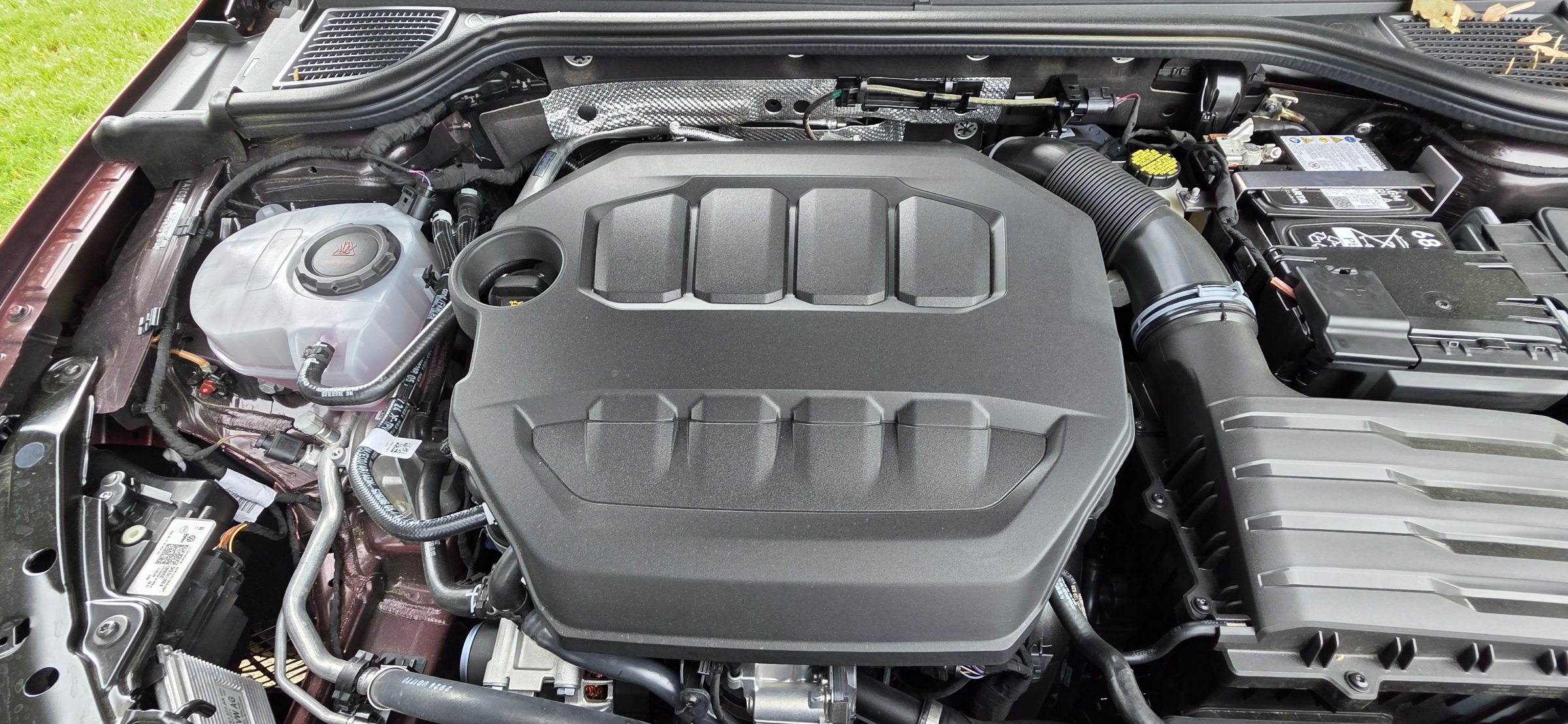
Performance for the GTI is unchanged with all models continuing to be powered by the venerable EA888 2.0-liter turbo four which still makes 241 horsepower and 273 pound-feet of torque (same as before.) The unchanged engine is mated to an eight-speed automatic which is now the only transmission available. VW says the manual was axed due to regulations and declining demand but the dinky shifter toggle for the automatic is not the same as the iconic golf-ball shifter.
That said, the combo is enough to help our tester make the sprint to 60 mph in 5.5 seconds but the spirited four-cylinder is blunted slightly by the steering system with our tester having a tiller that simply felt too mushy even when the car was placed in Sport mode. The dampers did little to boost our enthusiasm with our tester displaying bouts of excess body roll when pushed through tight turns. Sport mode helps solve this to an extent but the Honda Civic Si will continue to have superior feedback and suspension tuning for the forseeable future. Autobahn models like our tester get grippier summer rubber versus the all-season tires seen on other models but the tires can only do so much to address the car’s feedback issues
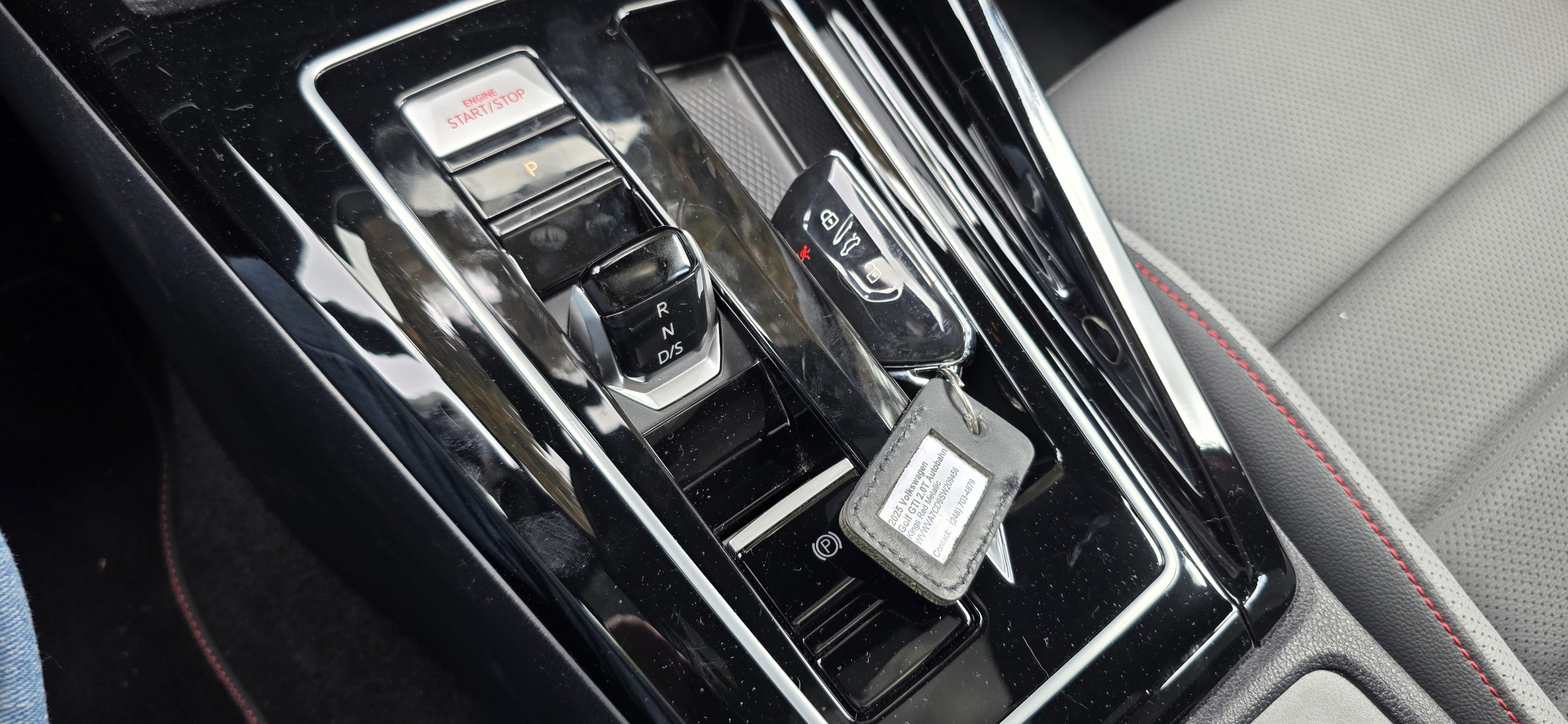
The loss of the stick also streamlines the GTI’s fuel economy numbers with Volkswagen saying the GTI can achieve an EPA-rated 27/24/32 mpg in city/freeway/combined driving. These numbers allow the GTI to be one of the more fuel-efficient options in the performance vehicle market a long-running plus for new vehicle buyers.
Value Quotient
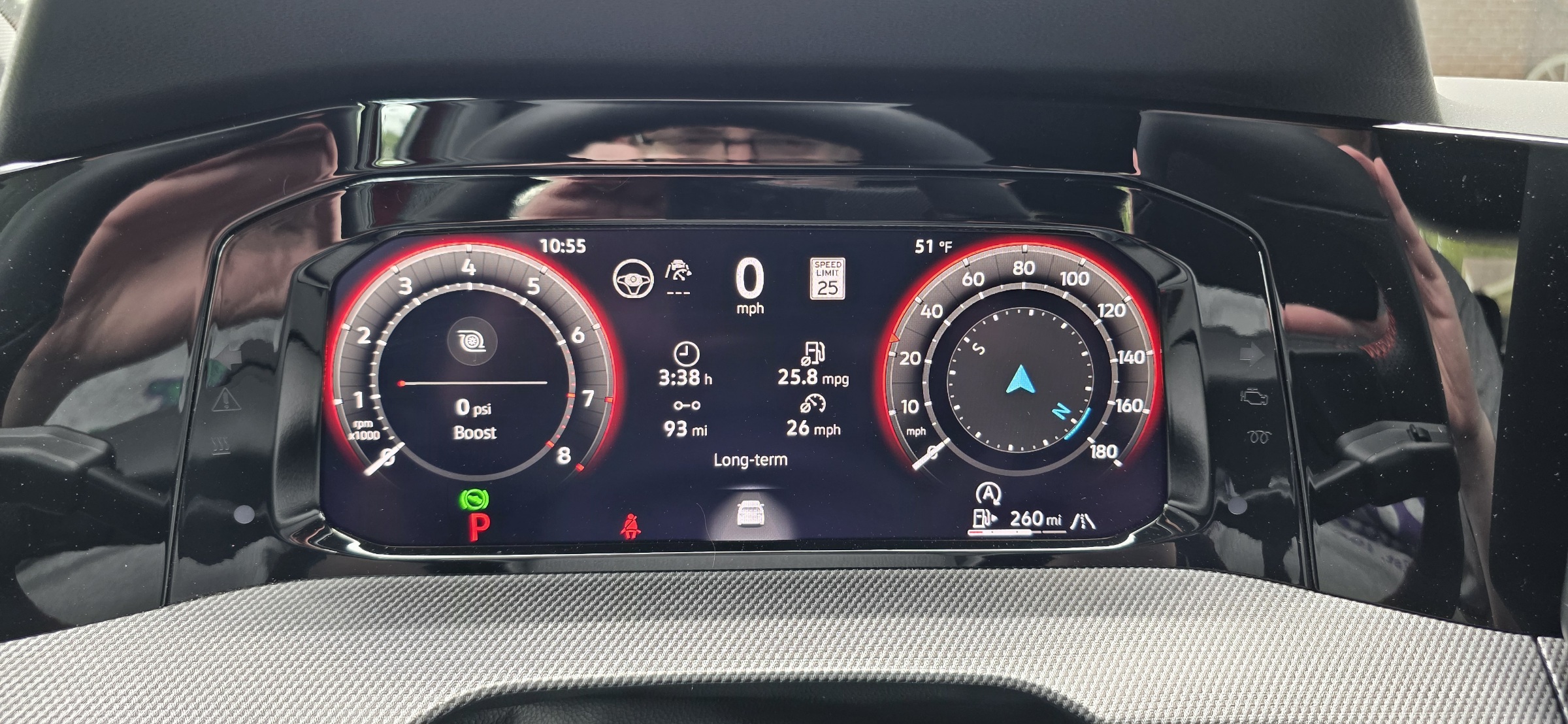
Pricing for the 2025 Volkswagen GTI has not gone up by much with a base S model starting at $33,670 with fees. Like before, the mid-range SE trim will serve as the volume model with these GTIs starting at $38,645. The SE also represents a fine balance of equipment with the SE getting ArtVelour upholstery, a Harmon Kardon premium audio system, and a keyless entry system. Autobahn models like our tester get heated and cooled leather seats and other luxury-focused features. The addition of these features also adds more meat to the price with a base model starting at $42,105. Our tester arrived with a small sprinkling of options that caused the final as-tested price to go over $45,000.
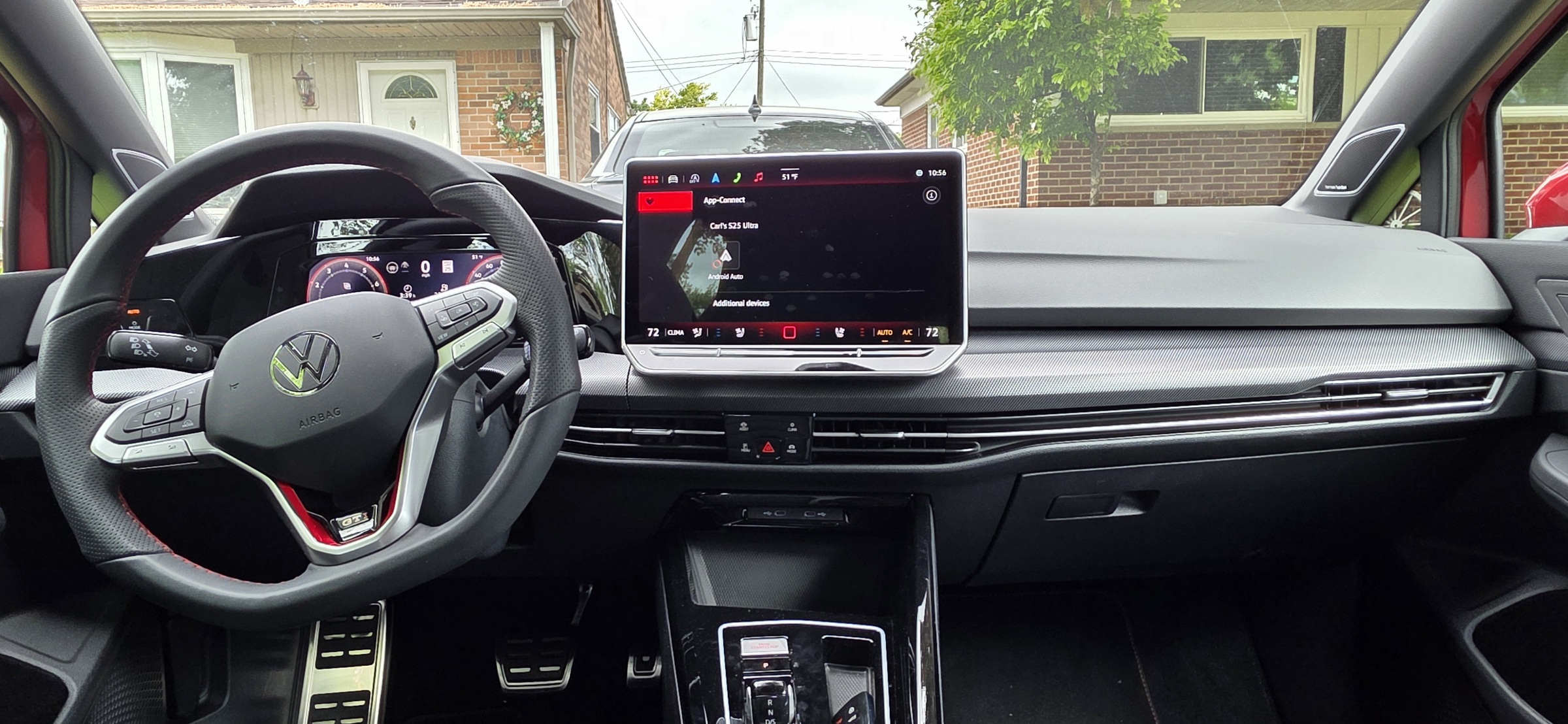
This pricing ladder continues to be one of the most appealing aspects of the GTI and while it also means the model is pricier than the Honda Civic Si and the Hyundai Elantra N, the higher amount of luxury and its more mature personality allow the GTI to appeal to buyers that want to have fun but don’t necessarily want to draw attention to themselves. The loss of the manual is a bit of a bummer, but the 2025 GTI continues to be the complete package when viewed by the sum of its parts and the improvements it brings to usability and daily commuting.

Carl Malek has been an automotive journalist for over 10 years. First starting out as a freelance photographer before making the transition to writing during college, his work has appeared on numerous automotive forums as well as websites such as Autoshopper.com.
Carl is also a big fan of British vehicles with the bulk of his devotion going to the Morgan Motor Company as well as offerings from Lotus, MG, and Caterham. When he is not writing about automobiles, Carl enjoys spending time with his family and friends in the Metro Detroit area, as well as spending time with his adorable pets.

